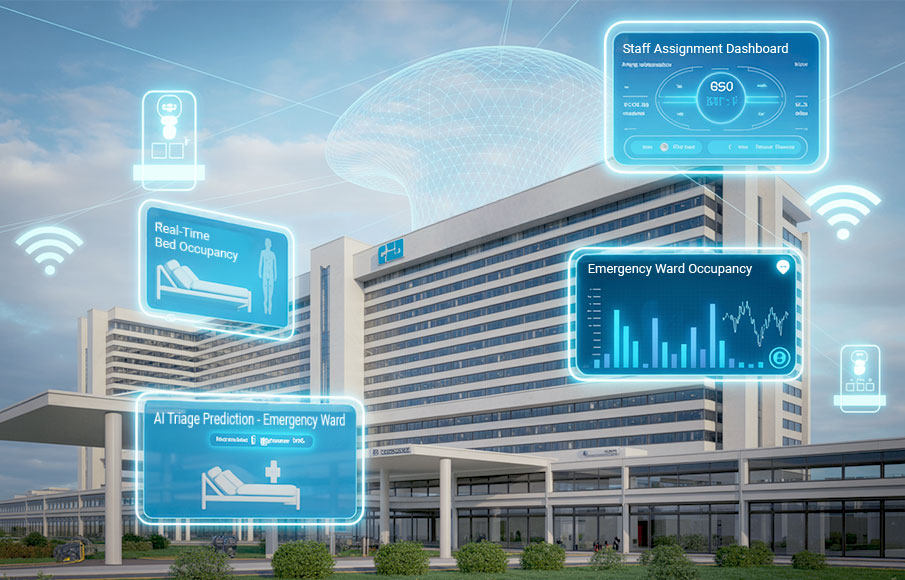Staying Ahead of Cyber Attacks with Virtual Cyber Security
- 22 March 2021

Digital technologies have become akin to life lines to many companies, with the initial onset of the pandemic crippling many aspects of business activities and operations. In fact, 73% of Singapore businesses have ramped up digitalisation efforts amid COVID-19, according to a study on innovation by Microsoft and IDC Asia Pacific, as both a measure to remain resilient and a timely opportunity to innovate.
With more business activities and operations taking place digitally, cyber security has become a natural, perhaps even urgent, consideration as companies become more vulnerable to cyber threats and attacks. A separate study commissioned by Cisco found that about 60% of organisations based locally have experienced at least a 25% increase in cyber threats since the pandemic started.
In this report by Fortinet, they found that attackers were using the pandemic to hide malicious activities behind seemingly innocuous COVID 19 lures, which shows the sophistication of newer attacks that play to users’ fears and concerns. Vulnerable devices on home networks were also found to significantly expand the attack surface for organizations with increased remote working.
With cyber threats constantly evolving and becoming more sophisticated, chief information security officers (CISOs) and cybersecurity teams need to be able to react swiftly to protect their institutions against cyber threats while maintaining business continuity. Companies can ill-afford issues like data breaches, network outages and malicious attacks compromising data integrity, that will impact their bottom line, reputation, and their customers.
Securing IT Networks On-premise is No Longer Sufficient
Indeed, prevention is better than cure when it comes to IT security, and typically organisations would deploy cyber security equipment in data centres, such as hardened routers, network firewalls, and web application firewalls (WAF). On-premise security solutions offer higher level of control and customisation, as IT or cybersecurity personnel can develop customised rules and policies that fit specific business requirements.
However, such on-premise solutions also have their shortcomings:
- They require in-house expertise to install, manage and maintain these devices and software when needed.
- Deployment onsite requires a longer lead time and qualified manpower. Customers will need to wait for suppliers to ship the equipment to their premises. They would then need to have personnel on site to install and update, thus increasing the turnaround time and manpower required – presenting a weakness when fast reactions are needed to the changing threat landscape.
- They are no longer effective enough to support distributed environments, especially as more and more employees are remotely working and accessing corporate networks from multiple locations.
- They also tend to have shorter lifespans and needs constant signature updates and license maintenance to ensure they are up to date to combat various types of cyber-attacks. These add up to the overall capital expenditure for the company.
Cloud based security is the future
Many organisations are turning to virtual or cloud-based security solutions to help bridge the gap and modernise their platforms.
- For one, virtual security solutions offer higher standards of security that locally-managed systems are unlikely to achieve, especially for small- and medium-sized enterprises (SMEs) that do not have access to in-house cyber security professionals. Cloud-based security providers typically have best-in-class security facilities and stringent compliance protocols and certification to ensure they provide the best security solution for businesses.
- Virtual security solutions also offer effective patch management. Security patches need to be applied diligently and accurately, making it a tedious IT admin task that not many SMEs have the resources for, thereby putting their systems at risk. Cloud-based solutions provide effective patch management with comprehensive, proactive monitoring to identify and address missing patches. This enables efficient patch deployment, and helps ensure data security, reduce operational downtime, and increase productivity.
- Importantly, virtual security solutions also require lower upfront investment costs. Businesses can customise the offering to their current needs, and only choose to add additional functions when needed. This allows companies to optimise their initial investment and provides them with the scalability and flexibility to adapt to future needs, without having to make large commitments to on-premise equipment and hardware at the beginning.
But this isn’t the full picture.
While cloud-based security is hailed as the future, it still requires cross domain expertise to design cyber security solutions to avoid interfering with IT and network performance. It is also no guarantee that standalone virtual solutions can offer faster turnaround and response mitigation to threats as they happen, as well as the efficacy of protecting corporate networks when more employees are working remotely. The best way to mitigate these shortcomings is to integrate cloud-based security over a software-defined network (SDN), which offers a myriad of benefits.
Bridging the Gaps for More Holistic Cyber Security Measures
This is where SPTel comes in. Instead of installing a box at customers’ office premises, we offer then an easier and faster way of deploying virtual security solutions digitally over our SDN. It also offers them the flexibility to scale as required and needed according to their current security requirements. This also makes it more assured for customers as they will not be under sizing their cyber requirements, and ensure adequate protection of their business network.
Our solution also comes with a front-end customer portal that will alert users to threats such as DDoS attacks so that businesses can mitigate before it becomes a cybersecurity issue. That is why SPTel’s Enterprise Internet solutions come with DDoS attack detection as a default, supported by the option of mitigating threats on demand to avoid loss of productivity and downtime.
Our signature Internet security can be further enhanced with the addition of vFirewall and vWeb Application Firewall services that can easily scale as businesses’ bandwidth requirements increase. Unlike typical vFirewall services, SPTel’s offering allow for greater customisation as the service instance is dedicated to the individual company.
Businesses can be assured that any new security protocols implemented in the corporate network can be ‘cascaded down’ to employees’ individual home set-ups, through our SD-WAN Work From Home solution, supported by our SDN. This means IT managers at the ‘head office’ can manage employees’ network access from home with the same security controls as if it is a ‘branch office’, enabling seamless transition from work to home. It lowers the risk of breach from an unsecured home connection, ensuring that employees’ work devices and corporate networks are aptly protected when companies implement hybrid work arrangements.
With virtual security supported by SPTel’s SDN, businesses can opt to start small and grow their network defence as needed without worrying about cost of ownership.
Maintaining cyber security features, though a priority for many companies, shouldn’t be a tedious and expensive exercise. Contact us for more information, or drop us an email if you have any questions.












